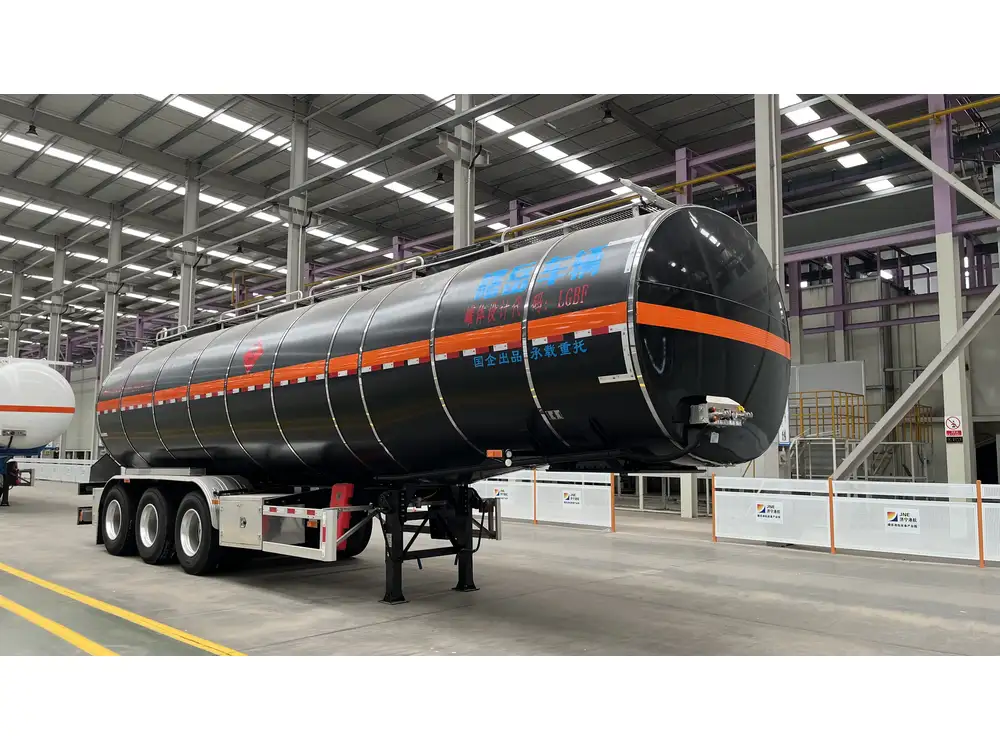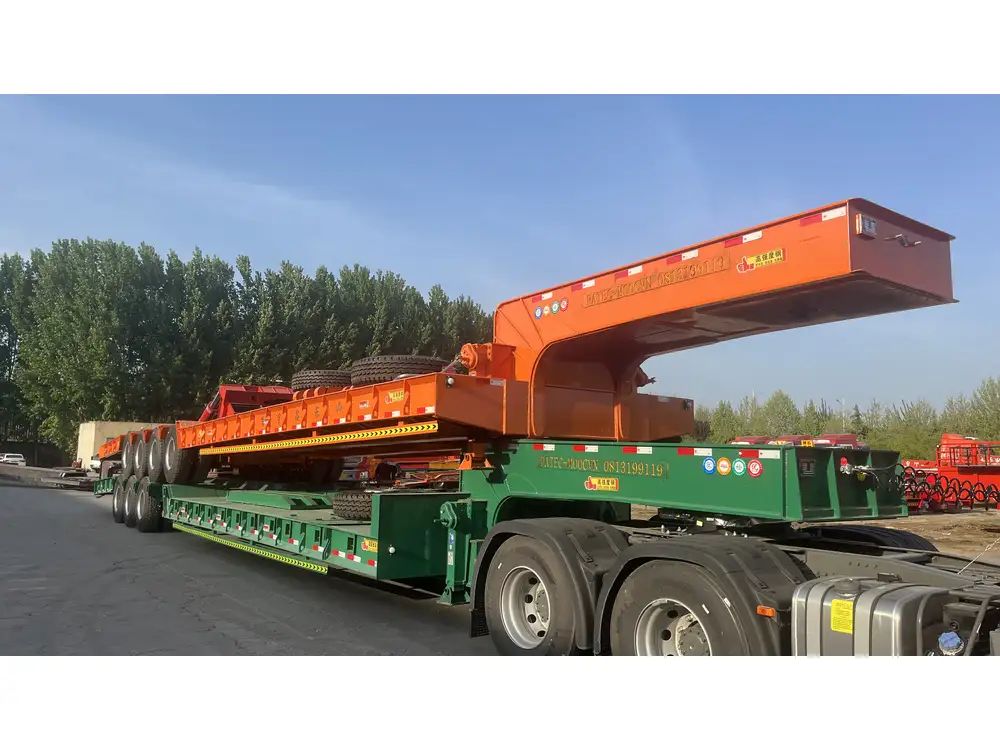Tanker trailers serve a crucial purpose in the transportation industry, particularly in moving liquid commodities such as fuel, chemicals, and food products. A question that frequently arises is, how much fuel does a tanker trailer hold? In this comprehensive guide, we will delve deep into the specifications of tanker trailers, explore the factors that influence their fuel capacity, and provide insights into the operational aspects that seek user understanding and conversion.
The Anatomy of a Tanker Trailer
A tanker trailer is designed to transport liquid substances safely and efficiently. The construction of these trailers typically consists of various components, including:
| Component | Description |
|---|---|
| Tank | The cylindrical container that holds the liquid. |
| Chassis | The frame that supports the tank and critical components. |
| Axles | Wheels that allow for mobility and support the load. |
| Valves | Mechanisms controlling the inflow and outflow of substances. |
| Safety Equipment | Includes spill containment systems, pressure relief valves, etc. |
| Insulation | Sometimes included to maintain the temperature of the contents. |
Common Tanker Trailer Types
Tanker trailers come in various shapes and sizes, designed to accommodate different types of liquids. Here’s a breakdown of the common types:

1. Fuel Tankers
- Capacity: Typically between 5,000 to 11,600 gallons (approximately 19,000 to 44,000 liters).
- Use: Transportation of gasoline, diesel, and other fuels.
2. Chemical Tankers
- Capacity: Range from 5,000 to 8,000 gallons (approximately 19,000 to 30,000 liters) but can go higher.
- Use: Safe transport of chemicals that may corrode or degrade standard materials.
3. Food Tankers
- Capacity: Usually about 5,000 to 6,500 gallons (approximately 19,000 to 25,000 liters).
- Use: Transport of food-grade liquids, requiring strict hygiene standards.

How Different Factors Affect Fuel Capacity
Several factors determine the actual fuel capacity of a tanker trailer. Understanding these components is crucial for those in the logistics and transportation sector.
A. Trailer Design
- Single vs. Multi-compartment: Multi-compartment tankers can hold various liquids simultaneously but generally compromise on the individual compartment sizes.
- Length and Diameter: The tank’s dimensions directly impact the capacity; longer and wider tanks hold more liquid.
B. Regulations
- Legal Limitations: Government regulations often dictate the maximum allowed load based on road conditions, environmental concerns, and safety standards. In many regions, this affects how much fuel a trailer can carry without special permits.

C. Material Composition
- Tank Material: Stainless steel, aluminum, or coated materials may influence the weight capacity and, hence, how much fuel can be transported.
Estimating Fuel Capacity
To calculate how much fuel a tanker trailer can hold, consider the following equation:
Capacity (in gallons) = π × (radius²) × height.
Example Calculation
If we assume a tanker trailer has a diameter of 8 feet and a length of 40 feet:
- Radius: 4 feet
- Height: 40 feet
Using the formula:
[ Capacity = \pi \times (4^2) \times 40 ]Calculating:
[ = 3.14 \times 16 \times 40 = 2010 gallons ]This simplified calculation helps to illustrate how a tanker’s dimensions directly impact its capacity.

Industry Practices and Standards
In the tanker transport sector, several practices and standards ensure safety and efficiency.
A. Loading Procedures
Loading a tanker trailer requires adherence to exacting procedures:
- Pre-inspection of the tank and associated equipment to ensure integrity.
- Proper loading techniques to prevent sloshing, which could affect the vehicle’s stability.
- Documentation of the volume loaded for regulatory compliance.
B. Safety Standards
Compliance with safety standards is non-negotiable. This includes:
- DOT Regulations: The Department of Transportation mandates specific standards for vehicles transporting hazardous materials.
- SPCC Plans: Spill Prevention, Control, and Countermeasure plans must be in place to handle potential leaks.

The Economics of Tanker Capacity
Understanding how much fuel a tanker trailer holds has significant financial implications:
A. Cost Efficiency
Larger tankers can provide increased efficiency in operations by reducing the number of trips required to transport fuel, ultimately lowering transportation costs.
B. Market Fluctuations
Fuel prices fluctuate, affecting the economics of running a fleet. By utilizing tanker trailers effectively, a company can make strategic decisions on when to transport fuel based on current market rates.

Comparisons of Different Tanker Capacities
To give a clearer perspective on the differences in tanker trailer capacities, let’s compare some examples in a table:
| Type of Tanker | Typical Capacity (Gallons) | Typical Capacity (Liters) |
|---|---|---|
| Fuel Tanker | 5,000 – 11,600 | 19,000 – 44,000 |
| Chemical Tanker | 5,000 – 8,000 | 19,000 – 30,000 |
| Food Tanker | 5,000 – 6,500 | 19,000 – 25,000 |
Questions Users Might Not Think to Ask
While most inquiries focus directly on capacity, several underlying questions enhance user understanding:
- What maintenance practices enhance tanker trailer longevity?
- How do different liquids affect tank materials?
- What are the risks involved with overloading a tanker trailer?
- What innovations are on the horizon for tanker trailer designs?
Each of these questions leads to insights crucial for manufacturing, operating, and maintaining tanker trailers effectively.
Conclusion
The capacity of a tanker trailer is influenced by numerous factors—design, regulatory standards, loading practices, and economic implications. As industry leaders, understanding these components not only aids in optimizing operational efficiency but also ensures compliance with safety standards. Knowing how much fuel a tanker trailer holds is just the beginning; it’s the nuance of managing, regulating, and effectively utilizing this knowledge that leads to success in the transportation sector.
Engaging with these details enriches our understanding and ultimately assists in achieving safer, more efficient transport solutions.



